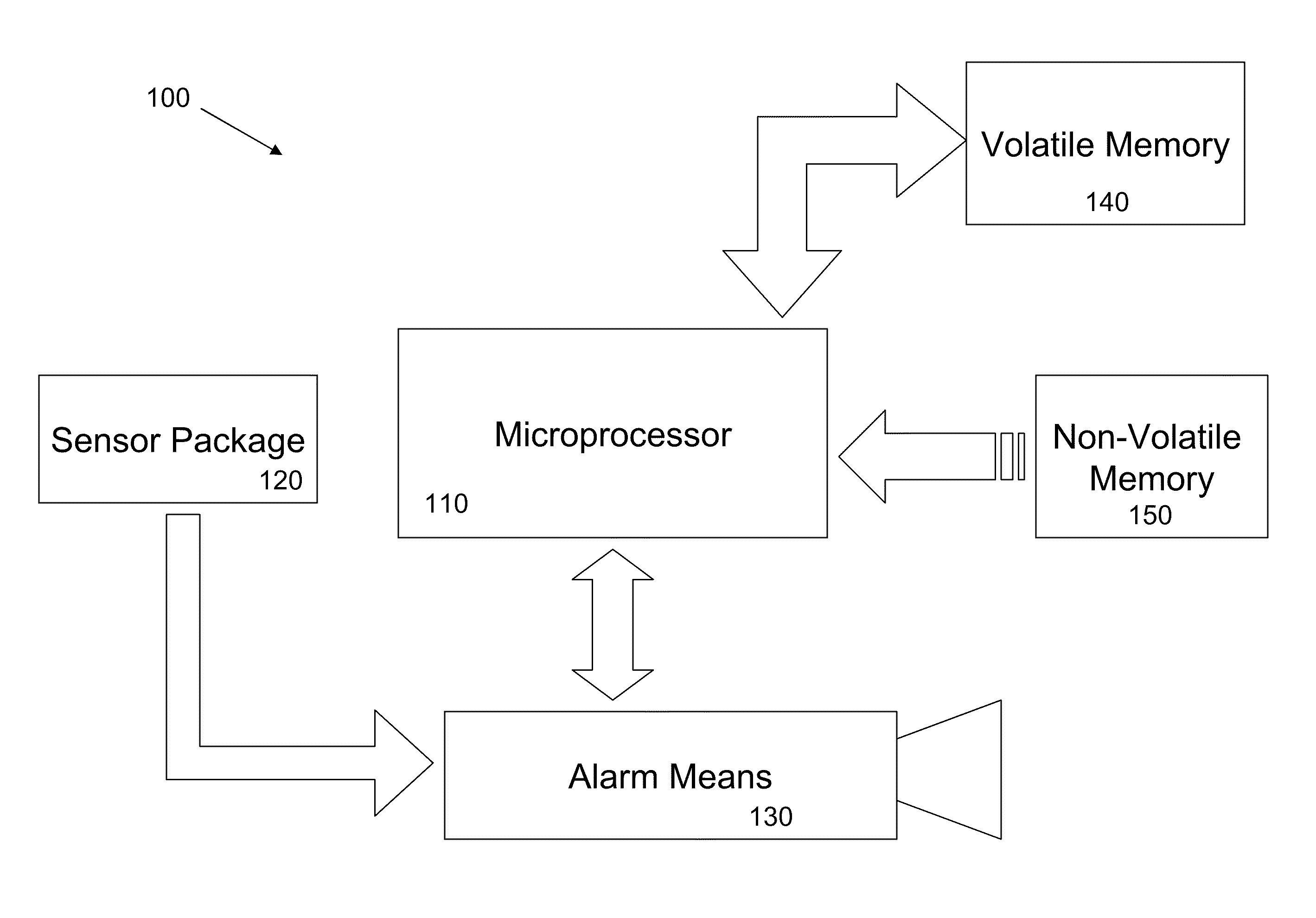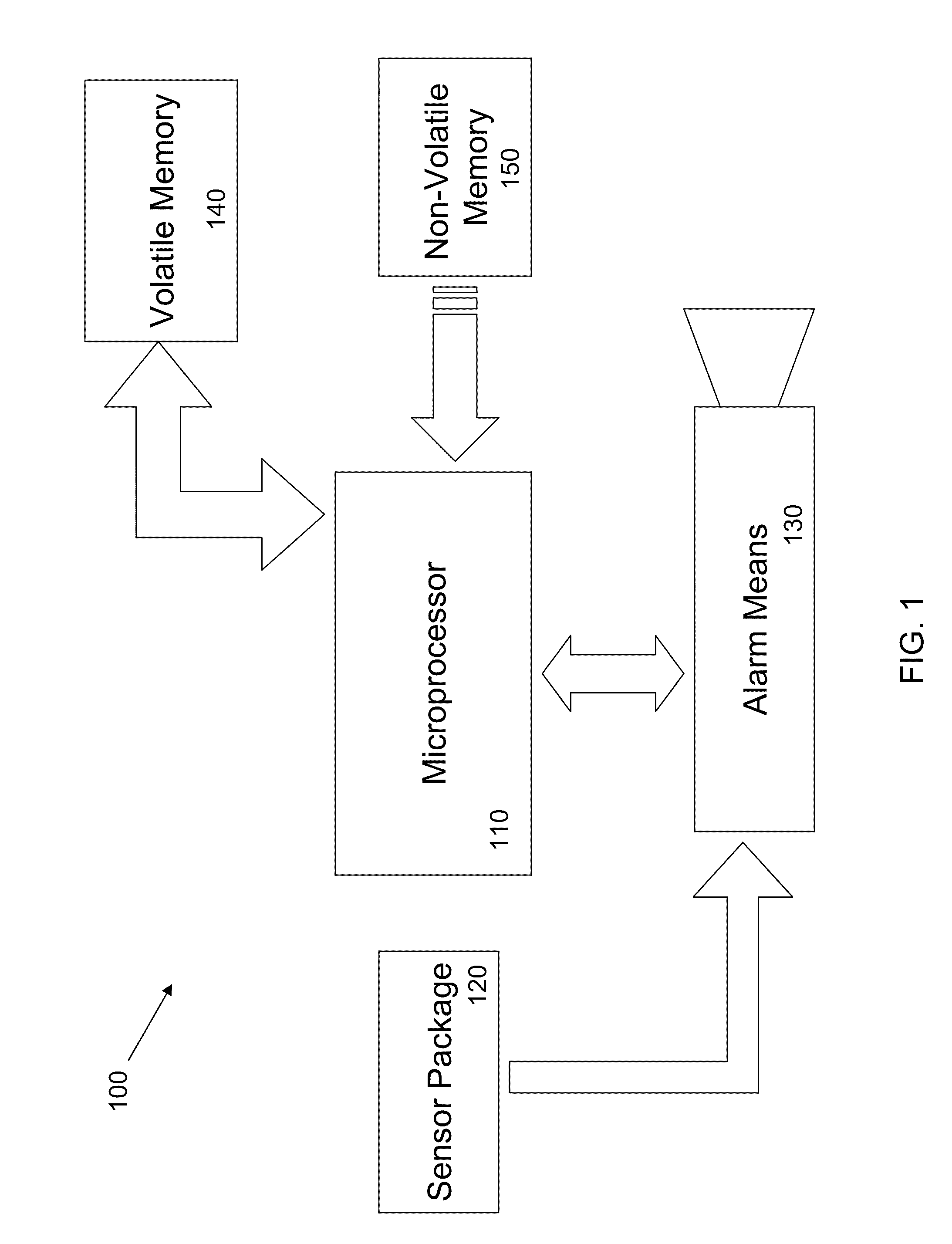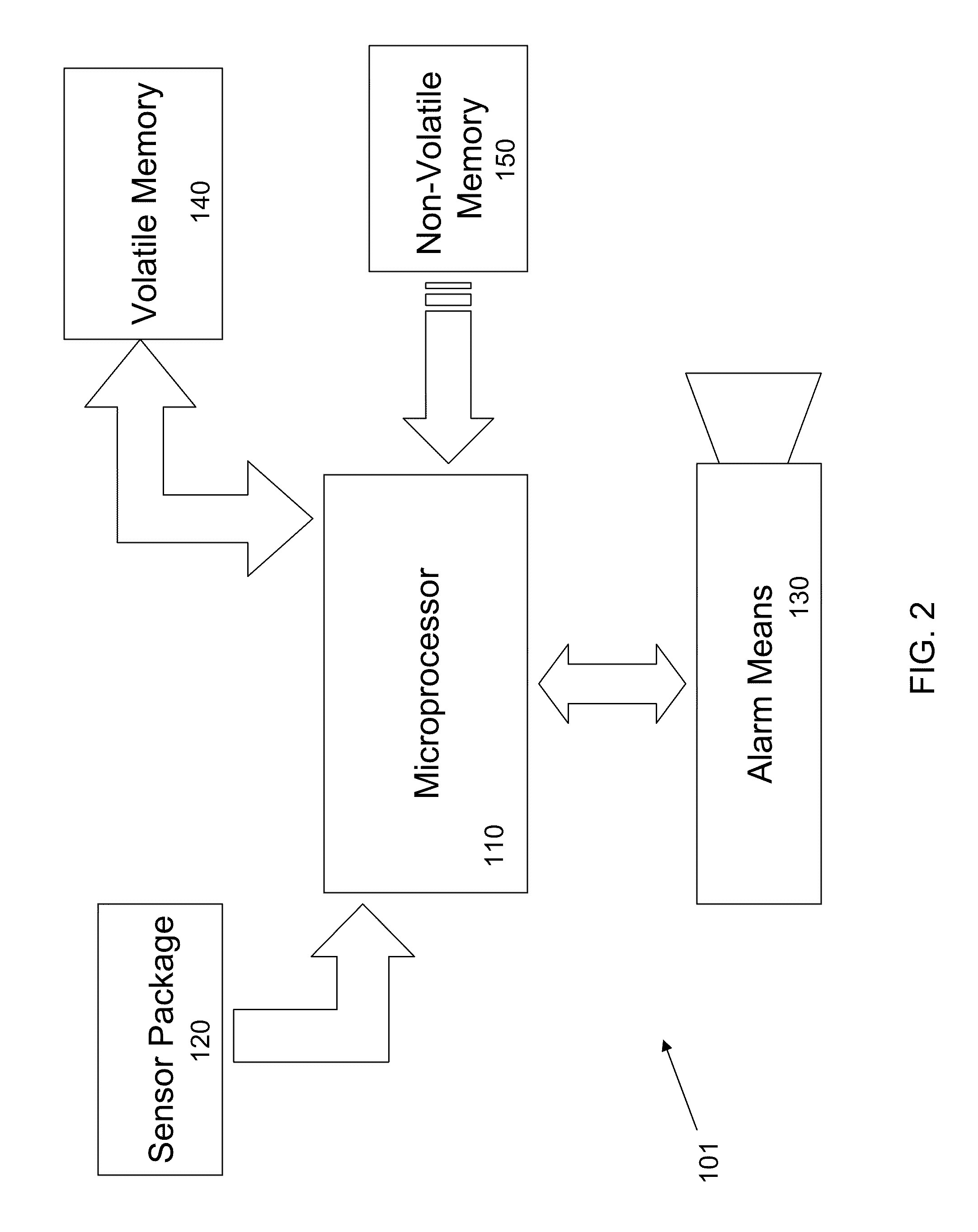Dynamic alarm sensitivity adjustment and auto-calibrating smoke detection
a dynamic alarm and sensitivity adjustment technology, applied in the direction of fire alarms, fire alarm smoke/gas actuation, instruments, etc., can solve the problems of inconsistent smoldering fire detection, inability to readily detect smoldering fires with ionization smoke sensors, and high cost, so as to achieve rapid and persistent change of ionization signal, rapid change of measured signal, and low cost
- Summary
- Abstract
- Description
- Claims
- Application Information
AI Technical Summary
Benefits of technology
Problems solved by technology
Method used
Image
Examples
Embodiment Construction
[0042]Various embodiments are discussed in detail below. While specific implementations of the disclosed technology are discussed, it should be understood that this is done for illustration purposes only. A person skilled in the relevant art will recognize that other components and configurations may be used without departing from the spirit and scope of the invention.
[0043]Referring now to the figures, wherein like reference numbers denote like elements, FIG. 1 illustrates an exemplarily embodiment of a microprocessor controlled hazardous condition detection system employing the disclosed ambient condition compensation feature. As shown in FIG. 1, the hazardous condition detection system 100 features a housing 101 containing a sensor package 120. The sensor package 120 contains at least one sensor that is exposed to the ambient environment and takes periodic readings of at least one predetermined environmental condition. The sensor package 120 may be comprised of a smoke sensor, a ...
PUM
 Login to View More
Login to View More Abstract
Description
Claims
Application Information
 Login to View More
Login to View More - R&D
- Intellectual Property
- Life Sciences
- Materials
- Tech Scout
- Unparalleled Data Quality
- Higher Quality Content
- 60% Fewer Hallucinations
Browse by: Latest US Patents, China's latest patents, Technical Efficacy Thesaurus, Application Domain, Technology Topic, Popular Technical Reports.
© 2025 PatSnap. All rights reserved.Legal|Privacy policy|Modern Slavery Act Transparency Statement|Sitemap|About US| Contact US: help@patsnap.com



